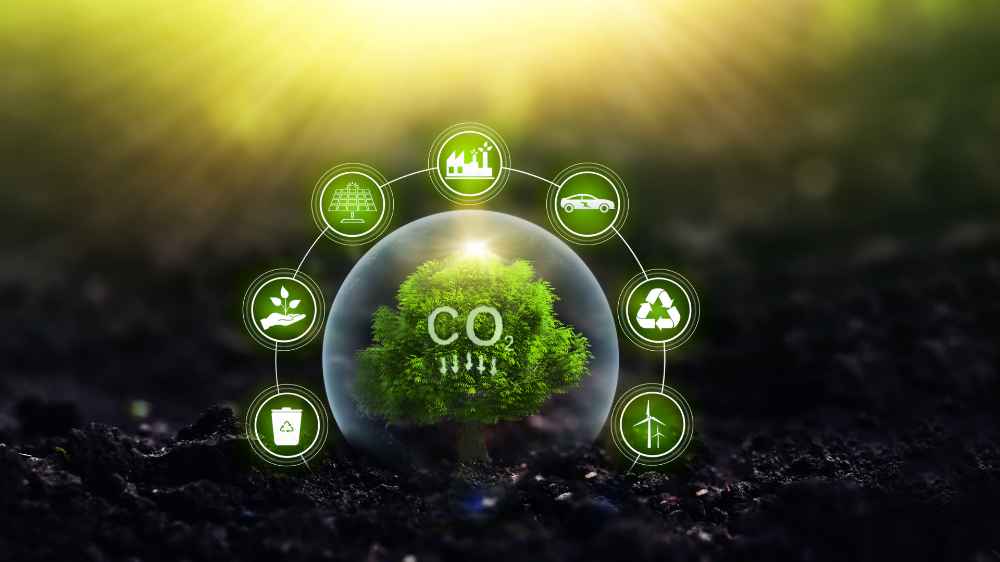The Rise of ESG in India’s Corporate Sector
What’s Changing in 2025?

In 2025, India stands at a pivotal moment. The corporate sector, once driven solely by profit margins and shareholder value, is undergoing a seismic shift. Environmental, Social, and Governance (ESG) principles are no longer buzzwords—they’re reshaping boardrooms, supply chains, and investment portfolios across the nation. For WOCE, a champion of sustainable business practices, this transformation signals an exciting leap toward a greener, fairer, and more accountable corporate India. But what’s driving this rise, and what’s changing in 2025? Let’s dive into the trends, challenges, and opportunities defining ESG’s ascent in India’s
corporate landscape.
The ESG Wave: Why Now?
India’s ESG journey didn’t start overnight. The seeds were sown with global commitments like the Paris Agreement and the UN’s Sustainable Development Goals, amplified by domestic policies pushing renewable energy and net-zero ambitions by 2070. But 2025 marks a turning point. Investors, consumers, and regulators are converging on one truth: sustainability isn’t optional—it’s essential.
The numbers tell a compelling story. ESG-focused funds in India have grown exponentially, with assets under management projected to hit $50 billion by 2026. This isn’t just about ethics; it’s about economics. Companies embracing ESG are seeing lower capital costs, better risk management, and stronger market positioning. Globally, firms with high ESG scores outperform peers by 10-15% in long-term returns—a trend Indian corporates can’t ignore.
What’s fueling this urgency? First, regulatory pressure. The Securities and Exchange Board of India (SEBI) has tightened its grip, mandating Business Responsibility and Sustainability Reporting (BRSR) for the top 1,000 listed companies. In 2025, SEBI’s expanded BRSR Core framework demands deeper disclosures on emissions, diversity, and supply chain ethics, pushing firms to walk the talk. Second, investor demand. Global funds, managing trillions, are prioritizing ESG-compliant companies, and India’s export-heavy sectors like steel and IT can’t afford to miss out. Finally, consumer sentiment—especially among Gen Z and millennials—is tilting toward brands with purpose, from eco-friendly packaging to fair labor practices.
What’s Changing in 2025?

1. Carbon Markets Take Center Stage
India’s carbon market is no longer a theoretical concept—it’s a reality reshaping corporate strategies. The Carbon Credit Trading Scheme (CCTS), set for full compliance in 2026, is already making waves in 2025. Nine high-emission sectors, including steel, cement, and power, are under scrutiny, with emission intensity targets looming. Voluntary trading is booming, with platforms enabling businesses to offset emissions through credits tied to solar farms or afforestation projects.
In 2025, corporates are racing to align with CCTS guidelines. Heavyweights like Tata Steel and Adani Green are doubling down on renewable energy investments, while smaller firms explore carbon offsets to stay competitive. The market’s value has crossed $1.2 billion, and India’s issuing 17% of global voluntary carbon credits—a sign of its growing clout. For WOCE, this is a golden opportunity to guide businesses toward credible offset strategies, ensuring transparency and impact.
2. Governance Gets a Makeover
The “G” in ESG is stealing the spotlight. Corporate scandals and governance lapses have eroded trust, but 2025 is seeing a course correction. Boards are diversifying—SEBI’s push for gender diversity has led to 25% of board seats in Nifty 500 companies being held by women, up from 18% in 2020. Anti-corruption measures are tightening, with whistleblower protections gaining traction.
Transparency is non-negotiable. Investors are demanding real-time ESG data, and companies are responding with AI-driven dashboards to track emissions, labor practices, and compliance. Take Infosys: its 2025 sustainability report integrates governance metrics like executive pay alignment with ESG goals, setting a benchmark for peers. WOCE’s role here is critical—helping firms build governance frameworks that balance accountability with innovation.
3. Social Impact Becomes Measurable
The “S” in ESG—social responsibility—is moving beyond philanthropy. In 2025, companies are under pressure to quantify their social impact, from workplace diversity to community upliftment. India’s unique Corporate Social Responsibility (CSR) mandate, requiring 2% of profits for social initiatives, is merging with ESG goals. Firms like Reliance are channeling CSR into education and healthcare, but now they’re tracking outcomes—like literacy rates or hospital bed access—through standardized metrics.
Labor practices are also in focus. With global scrutiny on supply chains, Indian textile and tech firms are auditing vendors for fair wages and safe conditions. The rise of DEI (Diversity, Equity, Inclusion) programs is notable—HCLTech’s 2025 target of 30% women in leadership is inspiring others. WOCE is uniquely positioned to bridge this gap, offering tools to measure and amplify social impact, ensuring it’s not just feel-good but financially strategic.
4. Green Tech and Innovation Surge
India’s corporate sector is betting big on green technology in 2025. The government’s $10 billion push for green hydrogen and electric mobility is spurring innovation. Mahindra & Mahindra’s electric SUV lineup and JSW Energy’s 5 GW renewable projects are reshaping their industries. Meanwhile, startups are disrupting the game—think carbon capture tech or blockchain for supply chain transparency.
AI is a game-changer. Companies are using predictive analytics to optimize energy use and reduce waste. For instance, ITC’s hotels now leverage AI to cut water consumption by 20%. WOCE can lead here by curating partnerships between corporates and green tech innovators, accelerating India’s transition to a low-carbon econom
Challenges on the Horizon

The ESG rise isn’t without hurdles. First, data quality remains a pain point. Many firms lack the systems to collect reliable ESG metrics, leading to greenwashing risks. Second, smaller enterprises—India’s economic backbone—struggle with compliance costs. Unlike conglomerates, MSMEs can’t afford pricey audits or tech upgrades. Third, cultural resistance persists. Traditional business mindsets, focused on short-term gains, clash with ESG’s long-term vision.
Geopolitically, 2025 brings uncertainty. Global ESG backlash, especially in the U.S., could dampen investor enthusiasm. India’s export sectors face pressure from the EU’s Carbon Border Adjustment Mechanism (CBAM), which taxes high-emission imports. Balancing growth with sustainability is tricky—India’s GDP targets demand energy, but coal reliance lingers.
The Road Ahead
In 2025, India’s corporate sector isn’t just adopting ESG—it’s redefining it. From carbon markets to inclusive workplaces, the changes are tangible and transformative. But it’s not a solo journey. Collaboration—between regulators, corporates, investors, and enablers like WOCE which provide the technology and expertise for ESG —is key to scaling impact.
ESG is redefining corporate India—sustainable firms are winning talent (80% of Gen Z loves purpose-driven brands), customers, and growth. By 2030, they could lead India’s $5 trillion economy, and WOCE is shaping that future, one green step at a time




